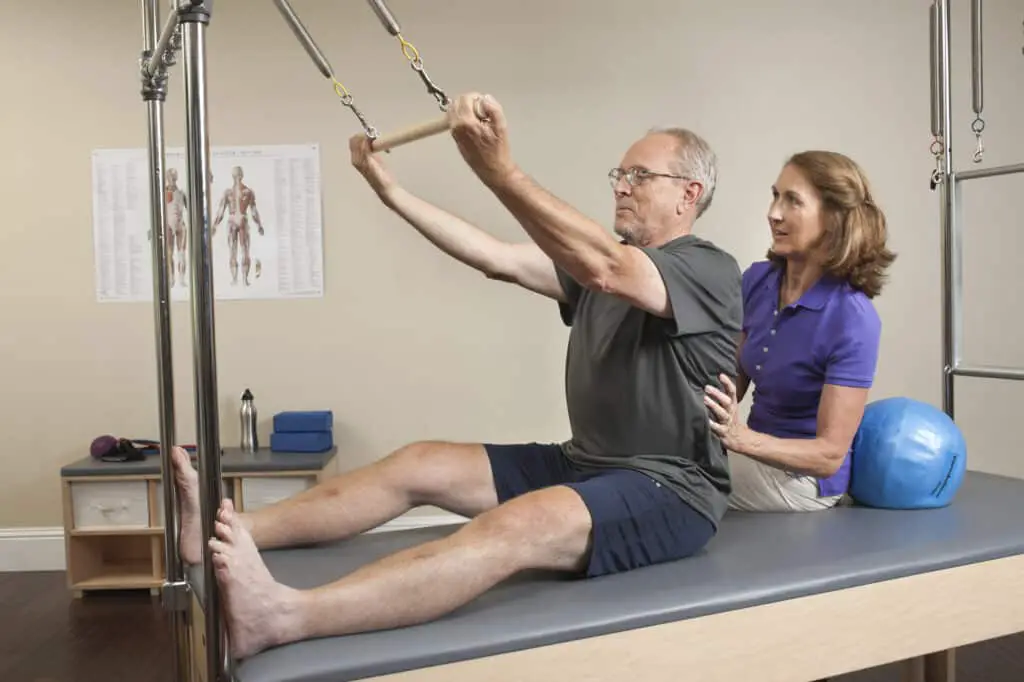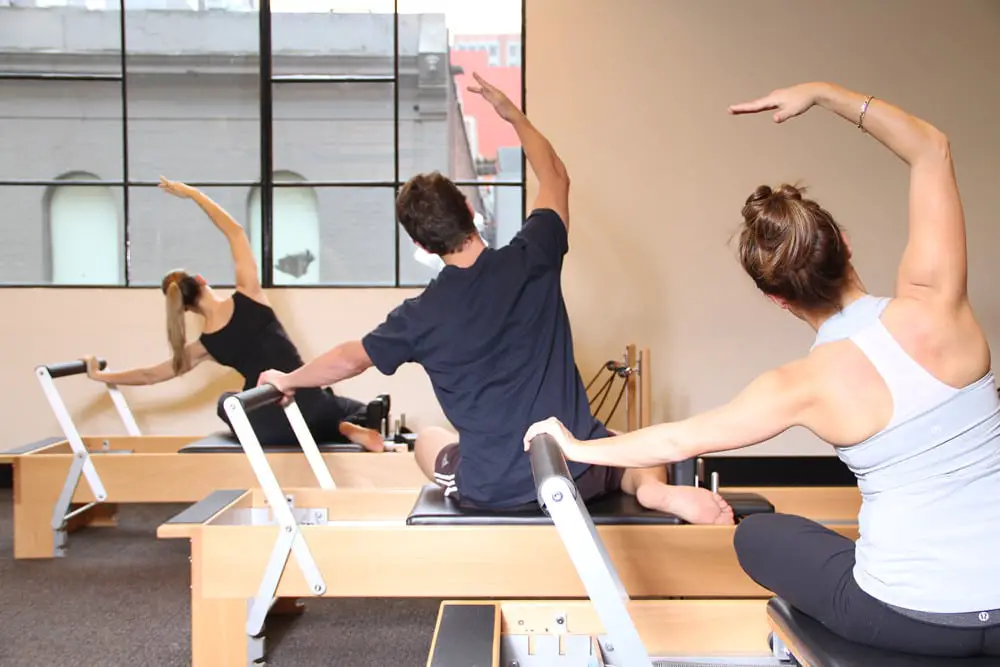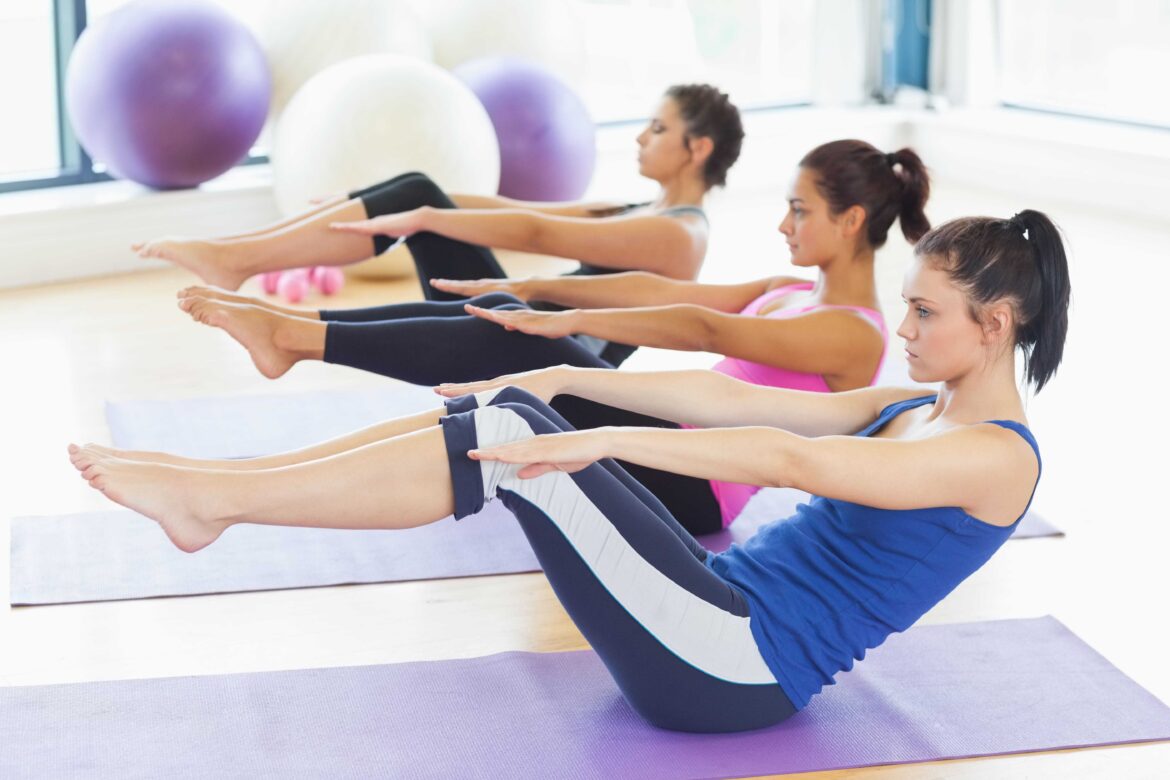Introduction
Where Did Pilates Originate: The origins of Pilates can be traced back to Germany in the early 20th century, where Joseph Pilates was born in 1883. As a child, he suffered from various health issues, including asthma and rickets, which inspired him to explore different forms of physical fitness and exercise to improve his health. His fascination with the human body and its potential for strength and flexibility led him to study various exercise disciplines, including yoga, gymnastics, martial arts, and bodybuilding.
Joseph Pilates eventually moved to England in 1912, where he worked as a self-defense instructor and boxer. During World War I, he was interned in a British camp along with other German nationals. It was during this time that he began refining and developing his exercise system, initially called “Contrology,” to help rehabilitate injured soldiers. He used springs from hospital beds to create resistance-based exercises that could be performed while lying down. These exercises aimed to strengthen muscles, improve flexibility, and enhance overall physical and mental well-being. After the war, Joseph Pilates returned to Germany briefly and then immigrated to the United States in 1926.
In New York City, he and his wife, Clara, opened the first Pilates studio, which quickly gained popularity among dancers, athletes, and individuals seeking a unique and effective approach to physical fitness. Dancers, in particular, found Pilates to be invaluable for enhancing their strength, balance, and flexibility. Over the years, the Pilates method continued to evolve and gain recognition, with Joseph Pilates refining and expanding his exercises and principles. He wrote a book called “Return to Life Through Contrology,” which outlined his philosophy and exercise techniques. In his writing, he emphasized the importance of the mind-body connection, deep breathing, and the integration of movement into daily life.

What country invented Pilates?
Germany
Through his own experience and teaching, he created a system of corrective exercise that he introduced to the American market in the late 1920s. Pilates was born in Mönchengladbach, Germany on December 9, 1883.
The Birth of Pilates
Pilates, originally known as “Contrology,” was created by Joseph Hubertus Pilates. Born in Mönchengladbach, Germany, in 1883, Joseph Pilates was a man ahead of his time when it came to physical fitness and wellness. His journey toward developing the Pilates method was influenced by a combination of factors, including his own health struggles and a profound interest in various physical disciplines.
Early Influences
Joseph Pilates was a sickly child who suffered from asthma, rickets, and rheumatic fever. Determined to overcome these health challenges, he immersed himself in studying different forms of exercise and movement, drawing inspiration from gymnastics, yoga, martial arts, and ancient Greek and Roman physical regimens. Additionally, he spent time observing animals in nature, believing that their movements could offer valuable insights into the mechanics of the human body.
The Pilates Method Takes Shape
Joseph Pilates’ innovative ideas and methodologies began to take shape during World War I when he was interned in a camp in England due to his German nationality. During this time, he started working with other prisoners of war, developing a system of exercises to help rehabilitate injured soldiers. These exercises formed the basis of what we now know as Pilates.
Who was Pilates originally created for?
In 1912 Pilates lived in England working as a circus performer, boxer and self-defence instructor. During the First World War, he was interned with other German nationals. During this time he developed his technique of physical fitness further, by teaching his fellow internees.
The Genesis of Pilates
Joseph Hubertus Pilates, the visionary behind the Pilates method, was born in Germany in 1883. From a young age, he struggled with various health issues, including asthma and rheumatic fever. These challenges compelled him to explore different forms of exercise and movement in his quest for improved health and vitality.
Influences on Joseph Pilates
Joseph Pilates drew inspiration from a diverse range of sources when developing his fitness system. His studies included yoga, gymnastics, martial arts, and various physical regimens from ancient cultures. He was also greatly influenced by the movements of animals, believing that observing and emulating their grace and efficiency could provide insights into human physiology.
The Original Audience
Pilates was originally created for a specific audience: dancers and athletes. Joseph Pilates initially developed his system while interned in a camp in England during World War I. Here, he began working with injured soldiers, using his exercises to aid in their rehabilitation. This experience allowed him to refine his approach and solidify the foundational principles of Pilates.
Upon relocating to the United States in 1926, Joseph Pilates and his wife Clara opened their first studio in New York City. Their studio quickly became a hub for dancers, particularly those from the New York City Ballet, as well as athletes and fitness enthusiasts. These individuals found immense value in Pilates’ unique combination of strength, flexibility, and body control exercises.
Is Pilates derived from yoga?
Derived from ancient yoga asanas, the Pilates exercise system was developed by Joseph Pilates over 80 years ago. Practiced for decades by dancers, Pilates has become very popular in recent years. Although Pilates works the entire body, the primary focus is on the core muscles (abs, lower back, and stabilizing muscles).
The Origins of Yoga
Yoga is an ancient practice with roots dating back over 5,000 years in India. It encompasses a wide range of physical, mental, and spiritual disciplines. Yoga aims to achieve harmony and balance in the body and mind through a combination of physical postures (asanas), breathing exercises (pranayama), meditation, and ethical principles (yamas and niyamas). Yoga has a strong philosophical and spiritual component, and its primary goal is self-realization and spiritual enlightenment.
The Origins of Pilates
Pilates, on the other hand, is a relatively modern fitness system created by Joseph Hubertus Pilates in the early 20th century. Born in Germany in 1883, Joseph Pilates developed his method as a means of improving physical health, strength, and rehabilitation. He drew inspiration from various sources, including gymnastics, martial arts, ballet, and his observations of animal movements. Pilates believed in the holistic connection between the body and mind but did not incorporate the spiritual or philosophical elements found in yoga.
Key Differences
Philosophy and Spirituality: Yoga has a strong spiritual and philosophical foundation, aiming to unite the individual with the universal consciousness. In contrast, Pilates focuses primarily on physical fitness, strength, and body conditioning, without the spiritual aspects of yoga.
Breathing: Both practices emphasize proper breathing techniques, but they approach it differently. Yoga often incorporates specific breathing exercises (pranayama) as a central element, while Pilates uses controlled breathing to support and enhance movement.
Postures and Movements: While both Pilates and yoga include exercises that improve flexibility and body awareness, their exercises and postures are distinct. Pilates emphasizes core strength, control, and precision, with a focus on movements that engage the abdominal muscles. Yoga postures, or asanas, vary widely and are often designed to target specific areas of the body or energy centers.
What religion does Pilates come from?
Joseph Pilates developed his work from a strong personal experience in fitness. Unhealthy as a child, he studied many kinds of self-improvement systems. He drew from Eastern practices and Zen Buddhism. He was inspired by the ancient Greek ideal of man perfected in the development of body, mind, and spirit.
The Pilates Method
Over time, Joseph Pilates developed his own system of exercises, initially known as “Contrology,” which later came to be called the Pilates method. His approach focused on building core strength, flexibility, balance, and body control. While Pilates recognized the importance of the mind-body connection, his system did not incorporate religious or spiritual elements.
Pilates in a Modern Context
Today, Pilates is widely practiced worldwide and is known for its ability to enhance physical fitness, posture, and overall well-being. It is used in various settings, including fitness studios, rehabilitation centers, and sports training programs. Pilates has evolved and diversified into different styles and variations, but its core principles of controlled movement and precise muscle engagement remain consistent.
Why is Pilates so expensive?
The Pilates instructors have spent considerable amount of time, effort and money in order to get themselves trained as instructors. This also means that Pilates instructors have a strong foundation in anatomy and movements as compared to many other fitness instructors.
Qualified Instructors
One of the primary reasons for the cost of Pilates is the need for qualified and certified instructors. Pilates instructors undergo rigorous training and certification programs to ensure they can teach the method safely and effectively. This extensive training requires both time and financial investment. As a result, instructors often charge higher rates to compensate for their expertise.
Specialized Equipment
Pilates can be performed on mats, but many practitioners choose to work with specialized equipment such as the reformer, Cadillac, and chair. These machines are designed to provide resistance and support for various Pilates exercises, enhancing the effectiveness of the workout. However, these pieces of equipment are costly to manufacture and maintain, and the expense is often reflected in the fees charged by Pilates studios that offer equipment-based classes.
Small Class Sizes
Pilates classes are typically smaller in size compared to other group fitness classes like yoga or aerobics. This is intentional, as smaller class sizes allow instructors to provide personalized attention and corrections to each participant. However, smaller classes mean fewer participants to share the cost, leading to higher individual fees.
Studio Overheads
Operating a Pilates studio involves significant overhead costs. These include rent or mortgage for studio space, utilities, equipment maintenance, insurance, and administrative staff salaries. All these expenses contribute to the overall cost of Pilates classes.
What are the 6 principles of Pilates?
The 6 Pilates principles (Breath, Concentration, Control, Precision, Centre and Flow) were actually created by Joseph’s students. They condensed his theories into 6 simple ideas to make his method accessible for future generations of students.
Centering
Centering is the first and perhaps the most fundamental principle of Pilates. It focuses on the concept of the body’s core, often referred to as the “powerhouse.” The powerhouse includes the muscles of the abdomen, lower back, hips, and buttocks. In Pilates, all movements originate from a stable and engaged core. By centering the body, practitioners ensure that they have a strong foundation from which to perform exercises, leading to improved control and balance.
Concentration
Concentration is a key element in Pilates practice. It requires focused attention on the precise execution of each movement. This principle encourages mindfulness and a deep connection between the mind and body. Concentration allows practitioners to become more aware of their movements, muscle engagement, and alignment, leading to more effective and efficient workouts.
Control
Control is integral to the Pilates method. Every movement in Pilates is performed with deliberate control, emphasizing quality over quantity. The goal is to move smoothly and with precision, avoiding jerky or haphazard motions. This controlled approach not only maximizes the benefits of each exercise but also reduces the risk of injury.
Precision
Precision goes hand in hand with control. Pilates exercises are designed to be precise in their execution, with attention to proper alignment, muscle engagement, and breath control. Precision ensures that each movement is targeted to work specific muscle groups, leading to improved body awareness and efficient muscle development.
Breath
Breath is a fundamental element of Pilates. Joseph Pilates believed in the importance of proper breathing to support movement and oxygenate the body. In Pilates, practitioners are encouraged to use diaphragmatic breathing, which involves deep inhalations through the nose and controlled exhalations through pursed lips. This controlled breath pattern helps stabilize the core and enhances the mind-body connection.
Flow
Flow, also known as “fluidity” or “rhythm,” is the principle that ties all the others together. Pilates exercises are designed to flow seamlessly from one to the next, creating a continuous and graceful movement pattern. This flowing quality not only makes the practice more enjoyable but also challenges the body’s endurance and coordination.
Why is Pilates so famous?
The Unparalleled Benefits
Studies comparing resistance training to Pilates have even shown that the latter modality is more effective in improving core stability, strength in surrounding muscle groups, and increasing overall mobility, all while being gentle on the joints.
Comprehensive Fitness Approach
One of the key reasons for Pilates’ fame is its comprehensive approach to fitness. Pilates exercises target not only the major muscle groups but also the smaller stabilizing muscles, promoting balanced muscle development. It addresses core strength, flexibility, balance, and posture, making it a well-rounded workout system that appeals to people of all fitness levels and ages.
Focus on Mind-Body Connection
Pilates places a strong emphasis on the mind-body connection. Practitioners learn to be mindful of their movements, breath, and body alignment. This holistic approach fosters self-awareness, reduces stress, and enhances overall mental well-being, making it particularly attractive to those seeking not just physical fitness but also mental clarity and relaxation.
Adaptability and Accessibility
Pilates is adaptable and accessible to a wide range of individuals. Whether you are an athlete looking to enhance performance, someone recovering from an injury, or a complete beginner, Pilates can be tailored to meet your specific needs and abilities. It can be performed on a mat with minimal equipment or on specialized machines, making it accessible for various fitness settings.
Celebrity Endorsement
The visibility of Pilates in the media, often associated with celebrities, has significantly contributed to its fame. Many famous individuals, including actors, athletes, and models, credit Pilates for their toned physiques and overall fitness. These endorsements have sparked interest and curiosity in Pilates among the general public.
Why is Pilates so effective?
Pilates promotes mobility and strength of all the major muscle groups in the body in a balanced fashion, whilst also having a key focus on the deep core muscles. It improves posture, flexibility, strength, balance and body awareness.
Focus on Core Strength
Pilates places a significant emphasis on core strength, often referred to as the “powerhouse.” The core muscles, including the abdominals, lower back, hips, and buttocks, play a fundamental role in maintaining stability and supporting the spine. Pilates exercises are designed to engage and strengthen these core muscles, leading to improved posture, reduced back pain, and enhanced overall strength.
Balanced Muscle Development
Unlike some other forms of exercise that can lead to muscle imbalances, Pilates promotes balanced muscle development. The exercises target both large muscle groups and smaller stabilizing muscles. This balanced approach helps prevent overuse injuries and ensures that the body functions optimally.
Improved Flexibility
Pilates incorporates dynamic stretching and lengthening of muscles, which leads to improved flexibility. Over time, practitioners experience increased range of motion and reduced muscle stiffness. Enhanced flexibility not only aids in everyday activities but also reduces the risk of injury during physical activities.
Mind-Body Connection
The mind-body connection is a core principle of Pilates. Practitioners are encouraged to be fully present and mindful during their workouts. This focus on the mind-body connection not only improves exercise performance but also reduces stress and promotes mental well-being. Pilates is often described as a form of mindful movement, allowing individuals to cultivate a deeper awareness of their bodies.

Conclusion
Pilates, the renowned exercise system celebrated for its emphasis on physical strength, flexibility, and mental well-being, originated in Germany in the early 20th century. Developed by the visionary Joseph Pilates, it began as a response to his own health challenges and evolved into a comprehensive approach to fitness and holistic well-being. Joseph Pilates’ journey from Germany to England and later to the United States allowed him to refine his method and share it with the world. Today, Pilates has become a global phenomenon, with countless practitioners reaping its benefits. Its rich history and enduring legacy make it a testament to the power of one individual’s innovation and dedication in shaping the world of fitness and wellness.
The benefits of Pilates, including improved core strength, flexibility, and posture, have been supported by research and embraced by healthcare professionals. It is commonly recommended as a complementary exercise method for rehabilitation and injury prevention. Pilates has transcended borders and is practiced worldwide, with studios, instructors, and enthusiasts in virtually every corner of the globe. It has become a mainstream fitness practice that continues to grow in popularity.
In summary, the origins of Pilates are rooted in the innovative mind of Joseph Pilates, who synthesized elements from various physical disciplines to create a comprehensive system that has had a profound impact on fitness, rehabilitation, and overall well-being. His enduring legacy lives on through the millions of people who continue to benefit from the Pilates method today.

